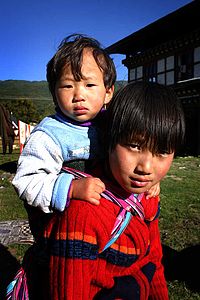
Photo from wikipedia
ABSTRACT The present study examined features of sibling and friend dyads’ connectedness (e.g., length and emotional tone of connected sequences) and the quality of the dyads’ interactions during play from… Click to show full abstract
ABSTRACT The present study examined features of sibling and friend dyads’ connectedness (e.g., length and emotional tone of connected sequences) and the quality of the dyads’ interactions during play from early to middle childhood. Forty-four families with a 4-year-old focal child were observed at Time 1 (T1) and again at Time 2 (T2) at age 7 in two separate play sessions (i.e., sibling and friend). Play sessions were coded for interaction quality (i.e., conflict, cooperation). Based on previous research, features of the sequences (i.e., emotional tone, length of sequence) were compared across relationship and time. Research Findings: Findings revealed similarities in the dyads’ interaction quality, with both siblings and friends increasing in cooperation over time. Similarly, the emotional tone of siblings’ and friends’ connected sequences was more likely to be positive than negative; however, siblings’ sequences were short rather than long, whereas friends’ sequences were more likely to be long than short. Practice or Policy: These findings provide new insights into children’s connectedness in child-child relationships and changes in connectedness across development from early to middle childhood. The study highlights the importance of observing the dyad when using a relationships theory framework to examine children’s interactions.
Journal Title: Early Education and Development
Year Published: 2019
Link to full text (if available)
Share on Social Media: Sign Up to like & get
recommendations!